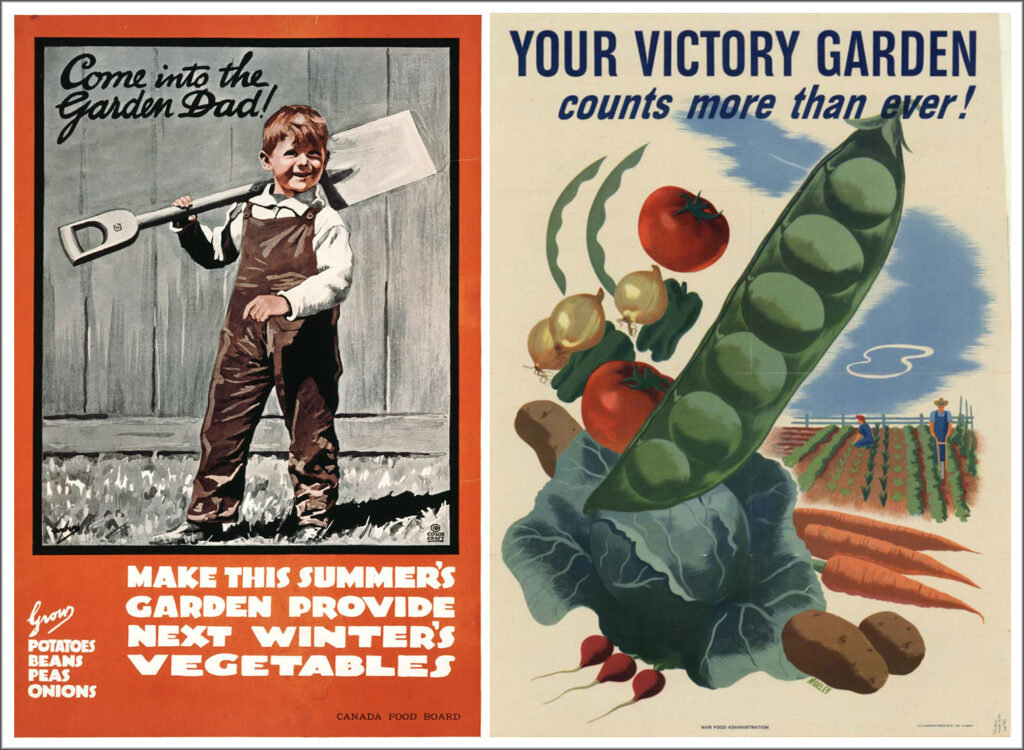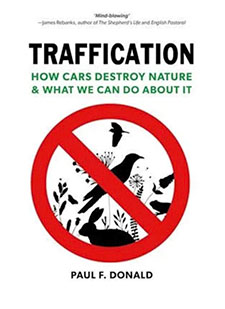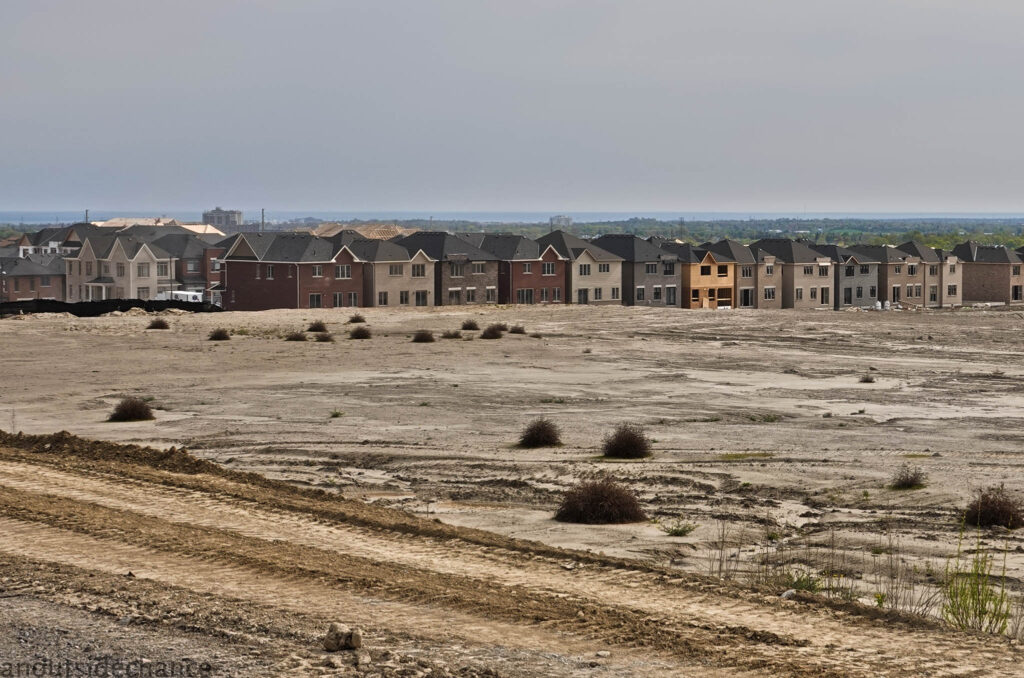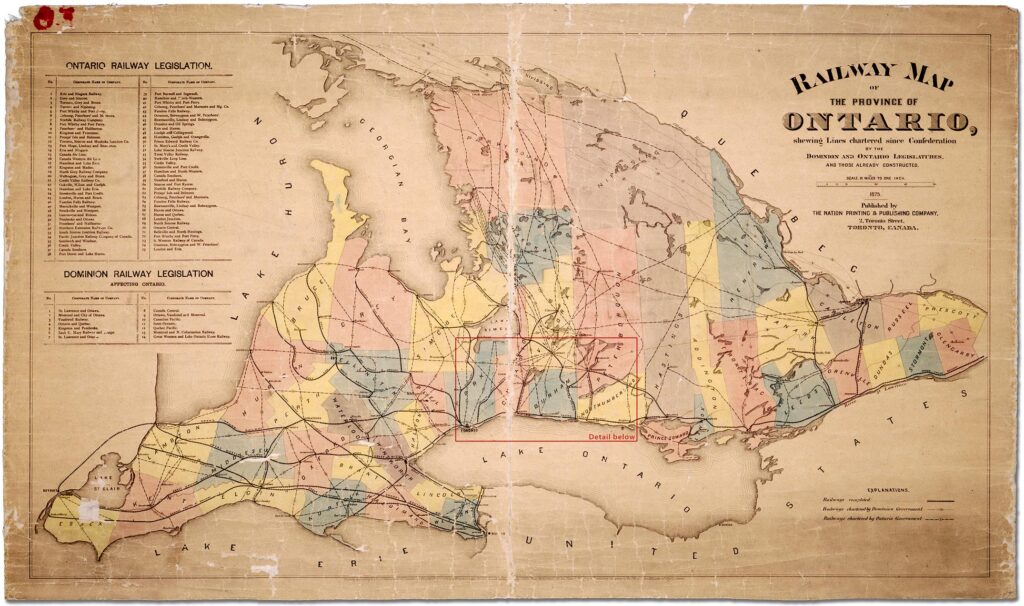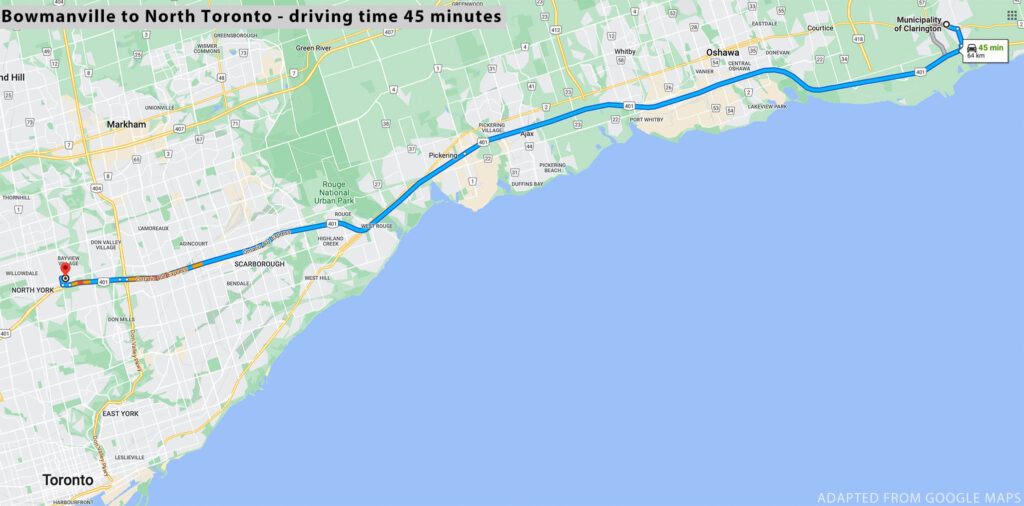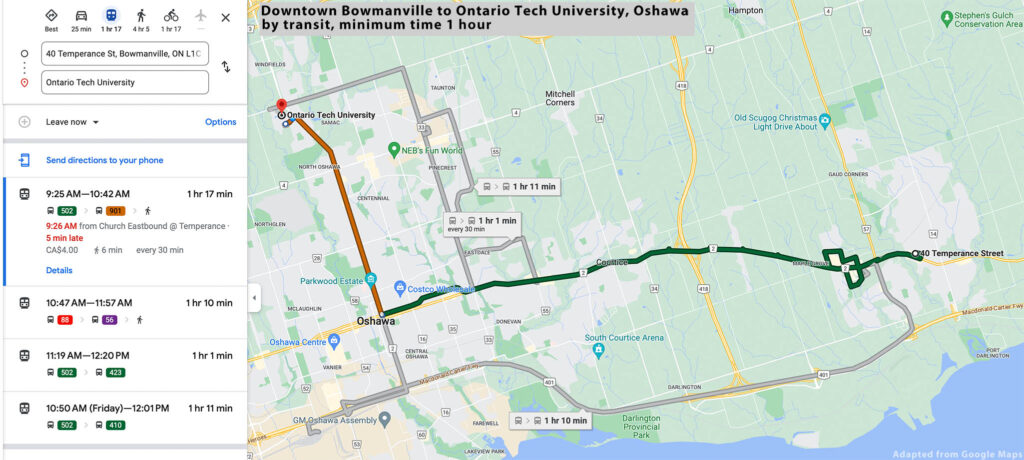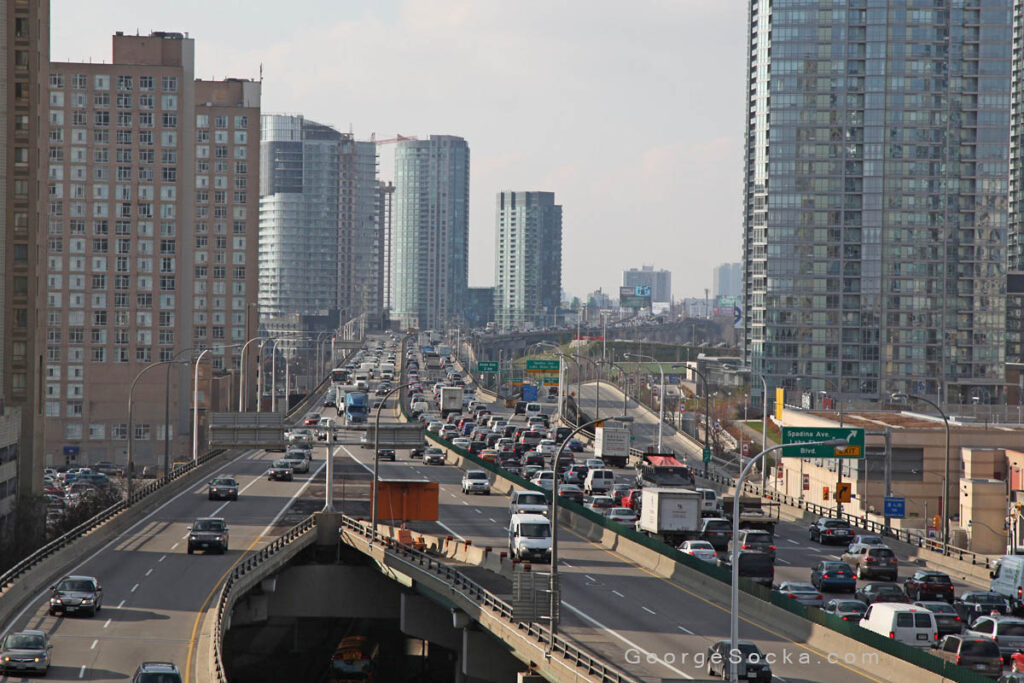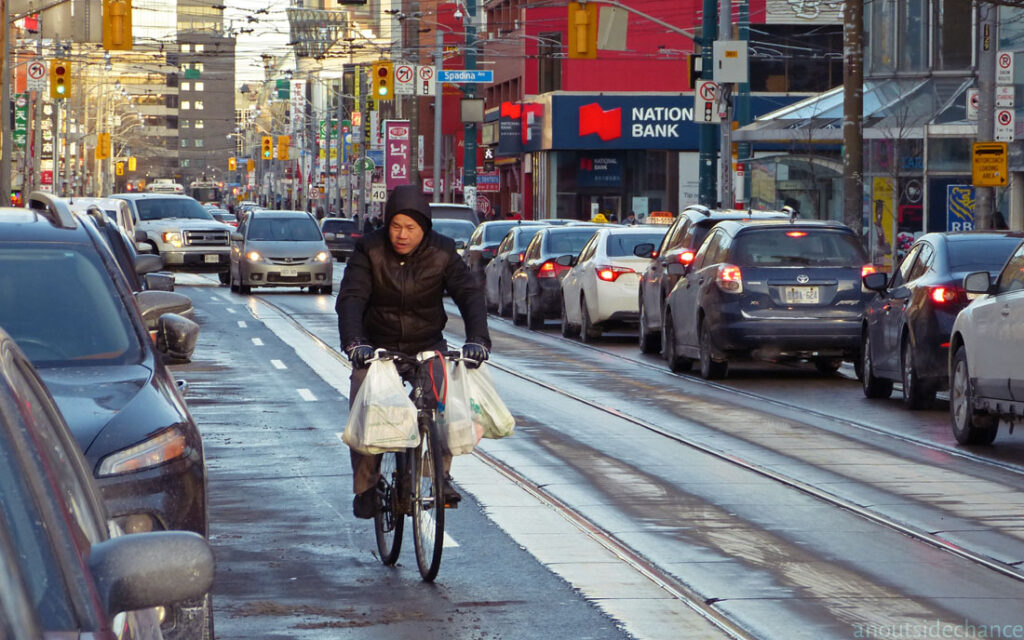Also published on Resilience
The post-WWII suburban settlement pattern assumes and reinforces car travel as the default transport choice for its residents. Do such settlements have a future when the temporary energy bonanza of the past 100 years falters? And can residents of suburbia begin to create that future today?
This series on the transition from car-dependency to walkability has examined the integral, sometimes convoluted relationship between land use planning and transportation planning. We’ve looked at major, top-down initiatives as well as small-scale efforts to intensify suburban land uses. This post will look primarily at small scale, from-the-ground-up efforts to make suburban travel safer for people who want to make more trips on foot or on bike.
The problems of suburbia arise not only at a local level, but are also due to national laws and subsidies that favour car ownership, state and provincial funding and specifications for expressways and major arterial roads, a housing development industry whose bread and butter is clearing land on the urban fringe for cookie-cutter subdivisions, and an entrenched culture within municipal governments that prioritizes throughput of vehicles in transportation plans.
Changes are needed at all of those levels – and some of those changes will take a lot of time, money, and political will. At a local level, though, political will can implement some important changes in very little time and with modest expenditures.
The Strong Towns organization promotes an approach that de-emphasizes large, comprehensive, expensive projects that will take years to produce results. By contrast, they advocate a simple, bottom-up approach to making small changes, starting right away:
“1. Humbly observe where people in the community struggle.
2. Ask the question: What is the next smallest thing we can do right now to address that struggle?
3. Do that thing. Do it right now.
4. Repeat.”1
Some of the barriers to walkability are small and can be quickly fixed – but in some cases they are left unfixed for years because “we are doing a transportation masterplan” which will, hopefully, propose a solution to be implemented years from now. A good example would be installing curb cuts that could make crossings accessible to someone pushing a stroller or traveling in a wheelchair. Simple improvements like this, when repeated at dozens of locations, can make life easier for many citizens and build hope and confidence that a municipality is moving in the right direction – even if larger and more elaborate changes are also needed.
A related approach, known as “tactical urbanism”, has been popularized by Mike Lydon and put into practice in many cities. (For an excellent introduction to Lydon’s approach see the video Tactical Urbanism: Transform your City Today! hosted by Gil Penalosa of 8/80 Cities.) Tactical Urbanism also looks for projects that can be implemented quickly and cheaply, though they might fit into a grand vision for much larger change to follow. By implementing changes quickly, on a pilot-project basis, this approach also allows much more effective public consultation.
As Lydon explains, typical public consultation processes fail to reach many of the people most affected by projects. The advantage of rapidly implemented pilot projects is that they allow public consultation to happen outdoors, onsite, where the people most affected by a change can see how the change is affecting their daily lives.
An example would be a “road diet”, in which a section of a four-lane collector road is reduced to three lanes – one travel lane in each direction, plus a shared center lane for left turns – thus freeing enough space for a protected bike lane on each side. Another example would be installing a “bump-out” at an intersection to reduce the unprotected distance a pedestrian needs to cross. These pilot projects can typically be done with nothing more expensive than paint and flexible, temporary plastic bollards. Following onsite consultations during the pilot project, the plan can be scrapped, modified, or implemented on a more durable permanent basis – all in less time than a comprehensive masterplan process would need to get to a draft stage.
Regular but temporary “open streets” programs – that is, closing streets to cars so they are open to people – have helped millions of people envision and understand how they could experience their cities in safer, more enjoyable, more pro-social ways. The most famous of these experiments began decades ago in Bogotá, Colombia. Today Bogotá’s program includes more than 100 km of city streets which are opened every Sunday, to a vast range of activities including exercise classes, street theatre, children’s games. The Open Streets program has spread to scores of cities, including many in North America, and has often led to permanent establishment of pedestrian blocks.2
“We’ll work with anyone – but we won’t wait for anyone”
Tactical urbanism programs often get their impetus from small groups of residents proposing changes to city staff. In some cases, though, tactical urbanist improvements are made directly by citizens who have tired of waiting for the slow wheels of bureaucracy to turn. This was the subject of a fascinating webinar entitled “Direct Action Gets the Goods: The Rise of Illicit Tactical Urbanism.”3 Led by Jessie Singer, author of There Are No Accidents, the webinar heard from anonymous direct action activists in Los Angeles, San Francisco, and Chattanooga. Their activities have included painting city-standard crosswalks at locations suggested by community members through a website form; installing benches at bus stops that lacked any nod to user comforts; and installing temporary bollards to convert a dangerous right-turn lane into a traffic-calming bump-out.
As the panelists explained, sometimes the citizen-installed crosswalks or benches were quickly removed by city staff. Just as often, however, city staff received so many messages of support for the new improvements that they were left in place, or quickly upgraded to a higher standard. In either case, the publicity the groups receive on social media ensures that important issues get a boost in visibility. Although advocacy work is sometimes seen as a win-or-lose game, a Crosswalks Collective Los Angeles member explained, “with guerrilla urbanism, there is no such thing as losing.”
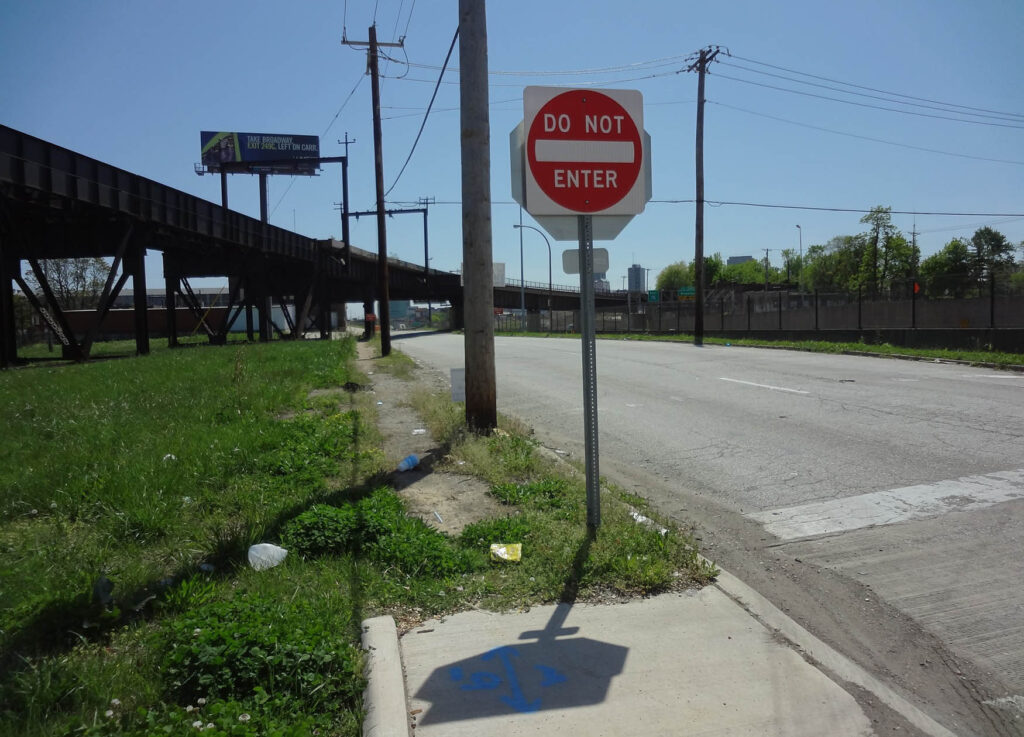
“Where the sidewalk ends”, North St. Louis, photo by Paul Sableman, May 9, 2012, licensed via CC BY 2.0 DEED, accessed on Flickr.
Follow the footsteps
When city staff take a close look at what citizens are accomplishing or attempting to accomplish on their own, they may discover ways their suburban environments can be improved. In an article entitled “Walking to the Strip Mall,” Nico Larco notes that informal pedestrian routes are common around suburban strip malls, indicating that even without good infrastructure, significant numbers of people walk to these malls. He notes that:
“Pedestrian networks in suburbia are much more than just sidewalks along streets. They include sidewalks within private property, cut-throughs, the streets themselves, paved and unpaved bike paths, informal goat paths, makeshift gates in fences, and kickdowns.”4
While these routes make it easier for some residents to get to and from these malls, they are far from ideal. The routes may be muddy, rough, impassable for people pushing strollers, strewn with garbage, routed through ditches, vacant lots, woods, and may be unlit at night. They often also lead to the rear loading-dock area of a strip mall, rather than the parking lot side where store entrances are located.
However, city staff should be looking at each case to see whether it is feasible to formalize some of these informal routes to make them useful and safe for a greater number of nearby residents. For example, it may be possible to secure an easement on a strip of private land, so that an informal pedestrian route can be formalized, paved or otherwise maintained, and lighted. Perhaps a public access doorway can be installed at the rear of a building, providing straight-through access for pedestrians who would benefit from a formalized pathway from their homes to the commercial entrances of the mall.
Clearly, each case will be different and not all of the informal pedestrian paths are likely to be good candidates for upgrading. But if they don’t take seriously the “votes” of citizens who are already marking out paths with their steps, municipal officials will miss an important chance to learn and to improve their suburban environments.
Walkable, bikeable, or both?
Jeff Speck has written,
“Walkable cities are also bikeable cities, because bicycles thrive in environments that support pedestrians and also because bikeability makes driving less necessary.”5
Once supportive and safe infrastructure is provided, rates of walking and biking go up dramatically. But biking is likely to be even more significant in suburban contexts, simply because distances tend to be greater. For the foreseeable future, many suburban trips are likely to be too long for walking to be a practical option – but the range of bicycles is growing due to electrification.
With the widespread availability of electric-assist bikes, a big share of suburban trips are now fully within the range of adults of average fitness. E-bikes can be a convenient, healthy, and economical transportation choice for individuals. Several US states and cities are now providing subsidies to residents for purchases of e-bikes.6
A study of e-bike potential noted that in England, an average person could comfortably use a bike for a trip of 11 km (6.8 miles), while the same average person could go 20 km (12.4 miles) on an electric-assist bike.7 One conclusion is that e-bikes could reduce car use even more in rural and suburban areas, where transit services are poor and distances are longer, than in urban cores where there are many options for the mostly short trips.
According to the United States Office of Energy Efficiency & Renewable Energy, in 2021 just over 50% of all trips were three miles or less.8
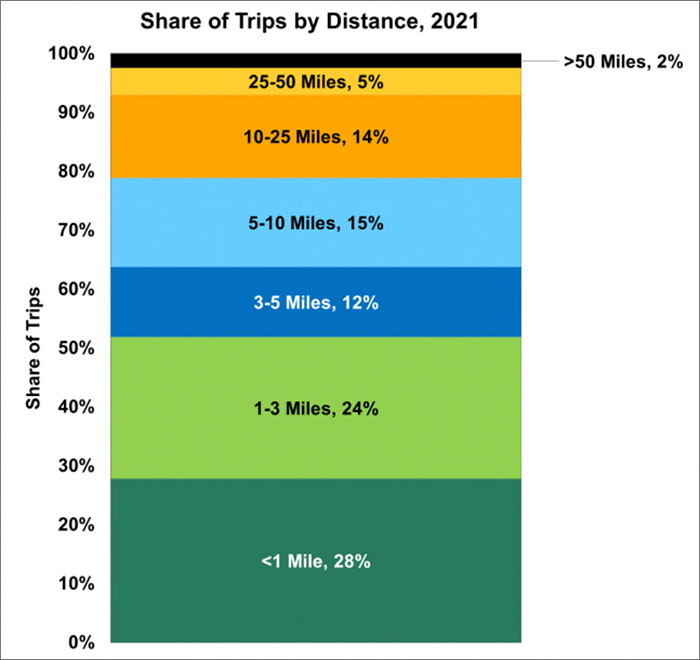
Source: Estimated for the Bureau of Transportation Statistics by the Maryland Transportation Institute and Center for Advanced Transportation Technology Laboratory at the University of Maryland. The travel statistics are produced from an anonymized national panel of mobile device data from multiple sources.
If the average resident of the US or Canada is as physically capable as the average resident of England, then even the trips in the third and fourth categories on the chart above would be feasible for many people on e-assist bikes. That would make bikes and e-bikes practical options for about 80% of trips – as long as there is safe infrastructure on which to ride those e-bikes.
The benefits of a switch by a significant segment of the population to e-bikes for many of their daily journeys would include not only a substantial reduction in traffic, but also a reduction in CO2 emissions, better health for the people making that lifestyle change, and significant cost reductions both for individuals and for cities.
Citing AAA figures, Michael Thomas wrote this month that
“After fuel, maintenance, insurance, taxes, and the like, owning and driving a new car in America costs $10,728 a year. My e-bike, by comparison, cost $2,000 off the rack and has near-negligible recurring charges.”
If a typical two-car family can trade one of their cars for an e-bike, that can make suburban housing suddenly much more affordable. But even the cost savings aren’t “the real reason you should get an e-bike,” Thomas wrote, because
“Study after study shows that people with longer car commutes are more likely to experience poor health outcomes and lower personal well-being—and that cyclists are the happiest commuters.”9
Should your municipality consider offering subsidies to encourage e-bike use? Consider that a $400 (US) subsidy could cover from 20% to 40% of the cost of a good e-bike, while that amount would be too small to be relevant to the potential buyer of an electric car. Consider also that e-bike charging stations could be installed at libraries, schools, shopping malls, and other destinations at a small fraction of the cost of electric car chargers, with little or no need to install electric grid upgrades.
* * *
There are a host of complications in transforming car-dependent suburbs. When I started this series on car-dependent suburbs, I planned to finish with one post on making the transformation to walkable, bikeable communities. That concluding post has now stretched to three long posts and I’ve just scratched the surface.
Clearly the best option would be to stop digging ourselves into these holes: stop building car-dependent suburbs now. But if you’re already in a car-dependent suburb, the time to start the transition to a walkable community is also now.
Notes
1 In “The Strong Towns Approach to Public Investment,” by Charles Marohn, Strong Towns, Sept 23, 2019.
2 See The Open Streets Project for information on these programs.
3 Part of the Vision Zero Cities 2023 conference sponsored by Transportation Alternatives, Oct 18, 2023.
4 “Walking to the Strip Mall: Retrofitting Informal Pedestrian Paths,” by Nico Larco, in Retrofitting Sprawl: Addressing Seventy Years of Failed Urban Form, edited by Emily Talen, University of Georgia Press, 2015.
5 Walkable City, 10th Anniversary Edition, by Jeff Speck, Picador, 2022, page 72.
6 “Free electric bikes? How many US cities and states are handling e-bike subsidies,” electric.co, 19 Feb 2023.
7 “E-bikes and their capability to reduce car CO2 emissions,” by Ian Philips, Jillian Anable and Tim Chatterton, Transport Policy, February 2022.
8 “More than Half of all Daily Trips Were Less than Three Miles in 2021,” US Office of Energy Efficiency & Renewable Energy, March 21, 2022.
9 “The real reason you should get an e-bike,” by Michael Thomas, The Atlantic, 20 Oct 2023.
Photo at top of page: “A man walks south on Cobb Parkway just south of Southern Polytechnic State University and Life University, a stretch of US 41 lacking sidewalks almost entirely. He’s got a long walk ahead to find the next crosswalk, which is 0.9 miles from the last one at Highway 120 — a stretch that is also almost completely devoid of sidewalks on both sides of the street.” Photo by Transportation For America, Metro Atlanta Pedestrians series, on Flickr, taken March 30, 2012, licensed via CC 2 BY-NC-ND 2.0 DEED.



